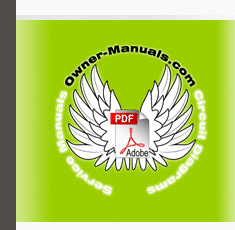|
|
|
Categories
|
|
Information
|
|
Featured Product
|
|
|
 |
|
|
There are currently no product reviews.
 ;
It is perfect, exactly what we needed. It's like the paper version but less clutter.
 ;
Received my manual within 24 hours. Very clear scan of the manual I needed. Thanks!
 ;
Very clear scan, I recommend it. Definitely a must have for any 3362 owner.
Alpine could have written a slightly more complete manual, though. It's already pretty huge, but the unit has so many functions, I feel some more explanation would have been better.
Yamaha's manual of their comparable YDSP-1 is a little better in my opinion.
 ;
Immediate response with excellent service - highly reccommended
 ;
Correct manual received and of good quality but the contents of the file for the Service Manual for the same monitor is for a 20" TV not the RGB Monitor.
Bank Select (Controller Number: 0, 32) Program Change Messages �
These messages are generally used to change tones. The tones are selected with Program Numbers 1 to 128. In the SCB-55, the Tone can be changed using Program Change messages. If a Bank Select (Control Change message) is used with a Program Change, more Variations can be selected.
Control Change Messages
These messages control the modulation and pan, etc. Each function is classified with a Control Change number.
�Modulation (Controller Number: 1) �Volume (Controller Number: 7)
� �
A vibrato effect is applied when this message is received.
This message conveys the volume level of the part. The part�s volume will change when this message is received.
�Expression (Controller Number: 11)
�
This message conveys the change in volume. This is used to lower or raise the volume during a song. * The part volume will change with either the volume message (Controller Number: 7) or expression message (Controller Number: 11). Note that if a 0 value is received with either of the messages, the part volume will be 0, and the part�s volume will not increase even with the other message.
�Panpot (Controller Number: 10)
�
This message provides adjustment for the sound location in the stereo field (L/R). Effective only when a stereo output is used.
Orientation Pan Left 0 Center 64 Right 127
�Hold 1 (Controller Number: 64)
�
This message conveys the pressing and releasing of the damper (sustain) pedal. Notes will be held when �hold on� is received. Sounds which decay naturally (such as pianos) will decay more slowly when �hold on� is received. Sustaining sounds (such as organs) will be held until �hold off� is received.
�Sostenuto (Controller Number: 66)
The pedal that sustains notes only when it is stepped on is called the sostenuto pedal. This message conveys the action of pressing and releasing this pedal. When �sostenuto on� is received, only notes played at the same time will be sustained. Sounds which decay naturally (such as pianos) will decay more slowly when �sostenuto on� is received. Sustaining sounds (such as organs) will be held until �sostenuto off� is received.
�Soft (Controller Number: 67)
The pedal that softens the sound of notes played is called the soft pedal. This message conveys the action of pressing and releasing this pedal. When �soft on� is received, the cut off frequency is lowered, and a soft sound is achieved. When �sostenuto off� is received, the original sound is restored.
10
|
|
 |
> |
|
|
Parse Time: 0.194 - Number of Queries: 137 - Query Time: 0.042
